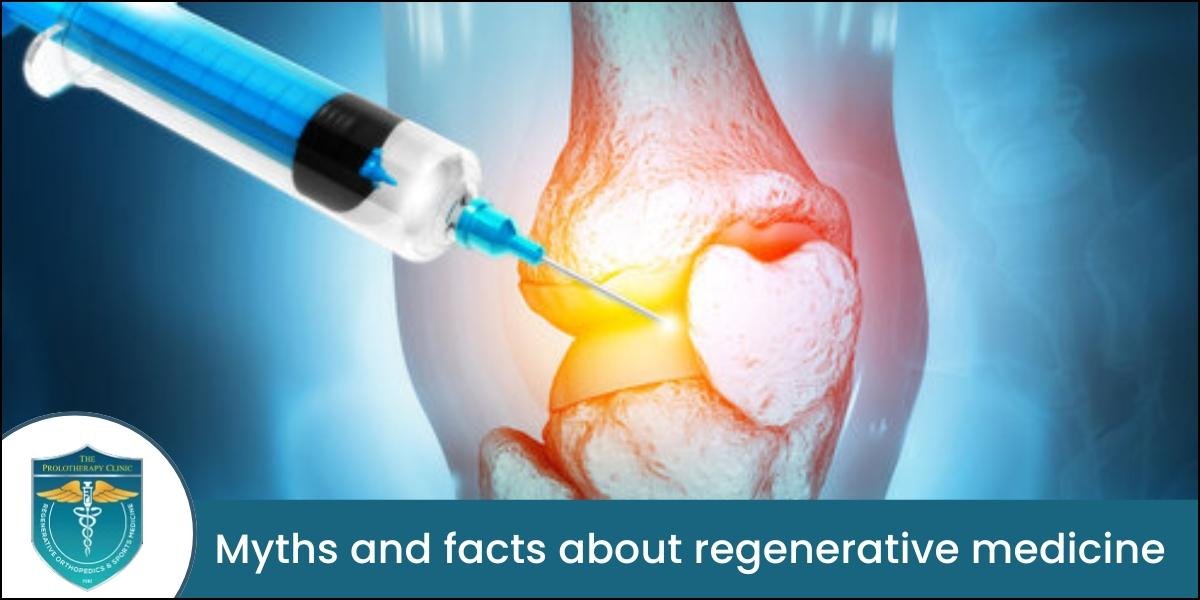Regenerative medicine is revolutionizing the field of orthopedics, offering hope to millions suffering from chronic pain and degenerative conditions. However, as its popularity grows, so does the misinformation surrounding it. Terms like “stem cell therapy” and “PRP” are often shrouded in mystery and exaggerated claims.
Debunking most common myths and presenting the evidence-based facts.
Myth #1: It’s Only Experimental and Not FDA-Approved.
Fact: This is a half-truth. While certain applications, especially those using specific stem cell types, are indeed part of ongoing clinical trials, many regenerative techniques are well-established. Platelet-Rich Plasma (PRP) Therapy is a widely accepted and used modality for musculoskeletal conditions. The process, which involves using a patient’s own blood components, is sanctioned and practiced globally for conditions like osteoarthritis, tendonitis, and ligament injuries.
Myth #2: Stem Cell Therapy Always Uses Embryonic Stem Cells.
Fact: This is one of the biggest misconceptions. Most modern orthopedic regenerative medicine, including the treatments we provide, uses adult autologous stem cells. This means the cells are harvested from the patient’s own body, typically from bone marrow or adipose (fat) tissue. This eliminates ethical concerns and significantly reduces the risk of rejection.
Myth #3: Results Are Instantaneous.
Fact: Regenerative medicine is not a magic bullet. Unlike a painkiller that masks symptoms, these therapies work by stimulating your body’s innate healing mechanisms. This biological process takes time. Patients may start to feel improvement within a few weeks, but the full regenerative effects—building new tissue, strengthening ligaments, and reducing inflammation—can take several months.
Myth #4: Surgery is Always a Better Option.
Fact: For many patients, regenerative medicine can be a powerful alternative to invasive surgery. Procedures like Prolotherapy, PRP, and Stem Cell injections are minimally invasive, have shorter recovery times, and carry far fewer risks than major surgical interventions. They aim to repair the damaged structure itself, rather than simply removing it (as in a meniscectomy) or replacing it (as in a joint replacement).
Myth #5: It’s Painful and Requires Long Downtime.
Fact: These are outpatient procedures performed under local anesthesia. While some post-procedure soreness or stiffness is normal for a few days, it is generally well-tolerated. Most patients resume their daily activities within 24-48 hours, with a gradual return to more strenuous activities as guided by their doctor.
Your Trusted Partner in Regenerative Medicine in Pune
If you are exploring options beyond painkillers and surgery, regenerative medicine could be the solution. Choosing the right clinic and doctor is paramount to achieving safe and effective results.
The Prolotherapy Clinic is a leading center for non-surgical orthopedic care. Under the expert guidance of Dr. Vikram Rajguru, a renowned orthopedic doctor in Baner, Pune, our clinic specializes in advanced treatments like Prolotherapy, PRP Therapy, and Stem Cell Therapy.
Dr. Vikram Rajguru and his team are dedicated to providing personalized care, using precise diagnostic techniques to determine if you are a suitable candidate for these innovative treatments. We prioritize patient education, transparency, and evidence-based practices to help you regain your mobility and live a pain-free life.
Frequently Asked Questions (FAQs)
1. What is regenerative medicine in simple words?
It is a branch of medicine that focuses on repairing or replacing damaged cells, tissues, and organs by harnessing the body’s own natural healing abilities, rather than just treating symptoms.
2. Is regenerative medicine safe?
Yes, when performed by a trained medical professional. Using a patient’s own cells (autologous therapy) greatly minimizes risks like rejection or infection.
3. What conditions can it treat?
It is effective for many orthopedic issues, including osteoarthritis, sports injuries (like tendon tears and ligament sprains), chronic back pain, and rotator cuff tears.
4. How long do the effects last?
Because it promotes natural healing, the effects are often long-lasting. Many patients experience pain relief and improved function for years, especially when combined with physical therapy.
5. Who is a good candidate for regenerative medicine?
Ideal candidates are individuals with chronic musculoskeletal pain who have not found adequate relief from conventional treatments like physiotherapy or medication, and who wish to avoid surgery.




